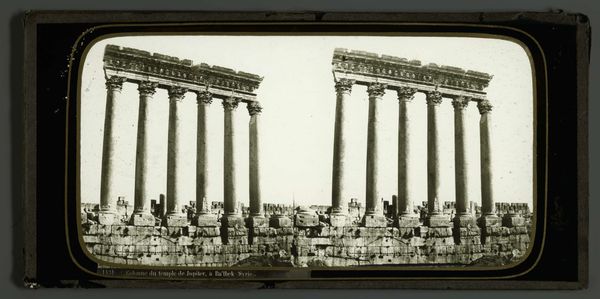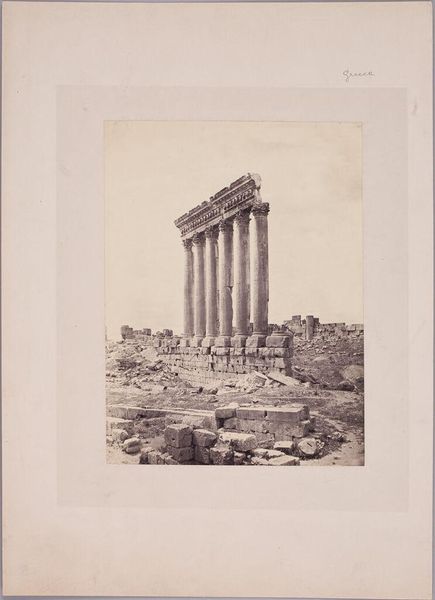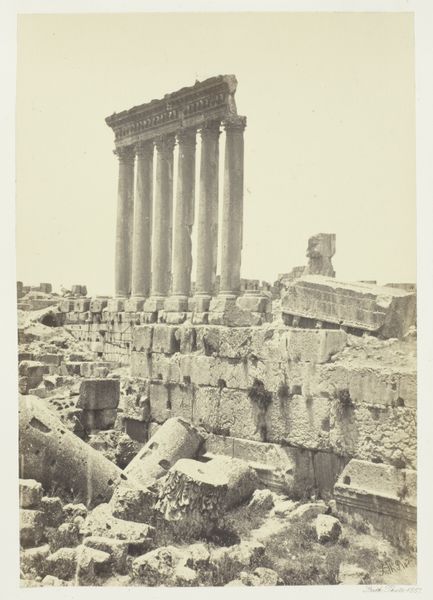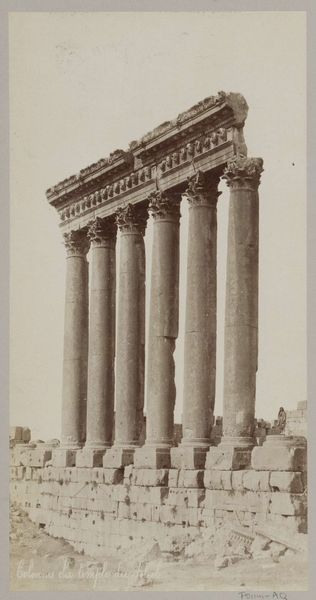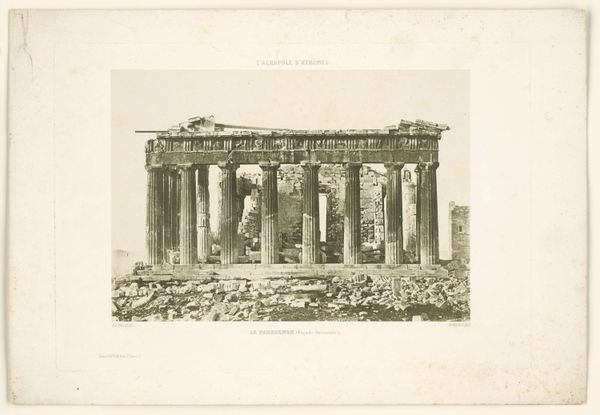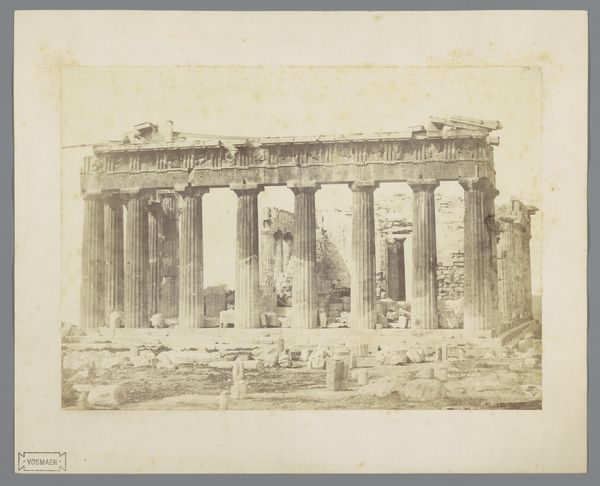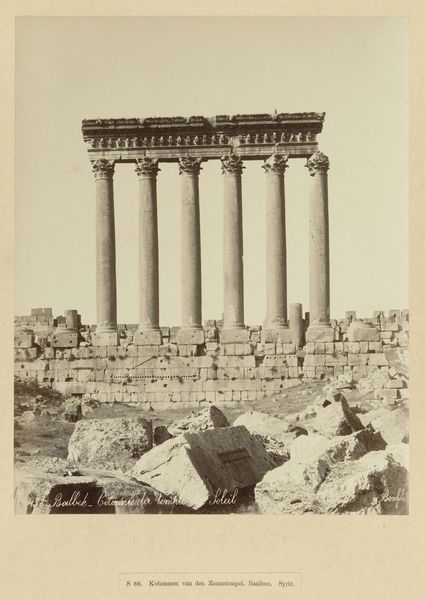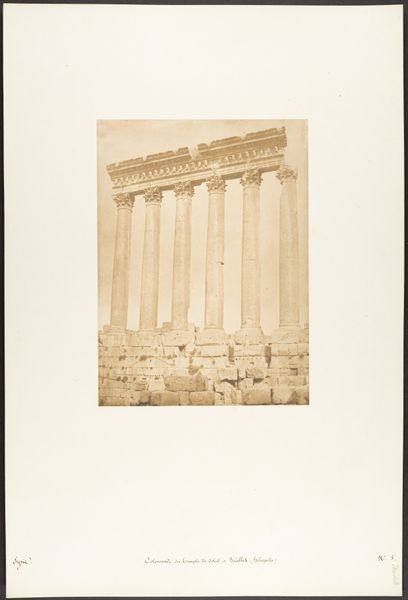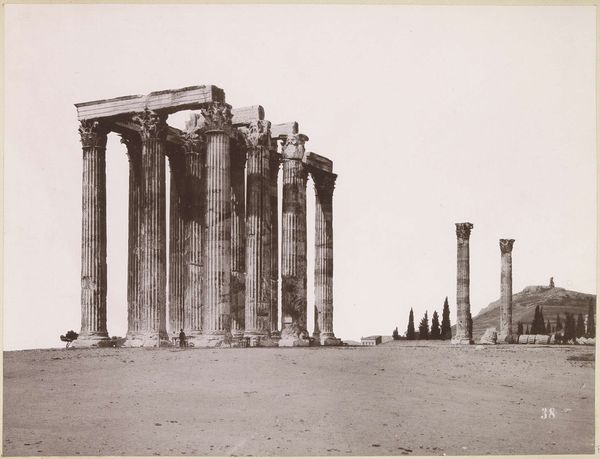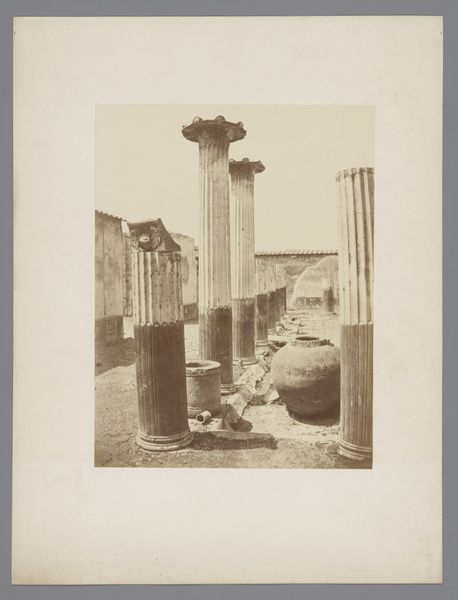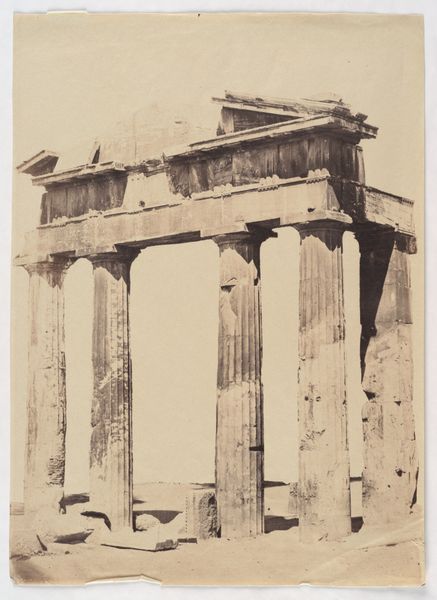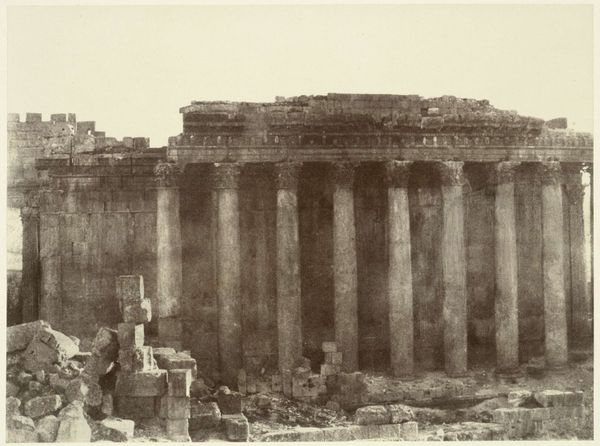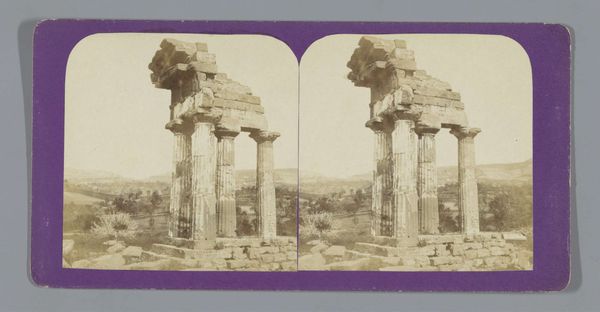
print, photography, architecture
# print
#
landscape
#
charcoal drawing
#
photography
#
ancient-mediterranean
#
column
#
architecture
Dimensions: height 87 mm, width 180 mm
Copyright: Rijks Museum: Open Domain
Editor: This is a 1903 print, titled *Pilaren van de tempel van Jupiter in Baalbek, Libanon* – or Pillars of the Temple of Jupiter in Baalbek, Lebanon. It appears to be a photograph, actually, showcasing Roman ruins. The symmetry of the columns is striking, but there’s also this pervading sense of loss, looking at this fragmented architecture. What do you see in this piece? Curator: I see more than just ruins, I see power. Consider Baalbek itself: a palimpsest of cultures, Phoenician, Roman, Byzantine, Islamic... each layering their ideologies onto the landscape. These columns, remnants of a Roman temple dedicated to Jupiter, are not just aesthetic objects. They're symbols of imperial ambition and control. How does the photographic medium itself contribute to this narrative? Editor: I suppose photography at the time, especially architectural photography, could be seen as a tool for documentation, but also for the assertion of colonial power? Freezing a moment of ‘discovery’ for Western audiences. Curator: Precisely. These images were often circulated to reinforce Western perceptions of the ‘Orient’ as both exotic and needing of civilizing. Now, looking at the state of ruin – what does that evoke? Is it simply romantic decay, or does it also represent the limitations of empire? Editor: So, the ruin itself becomes a commentary? Almost like a warning about the transience of power? The photograph isn’t just showing us something old; it’s critiquing the very idea of dominance. Curator: Absolutely! And it’s crucial to consider who had access to these images then, and who has access now. Whose stories are centered, and whose are marginalized in the telling of this history? Editor: I hadn't thought about it that way. I was so focused on the aesthetics. I see so much more complexity now. Curator: That's the power of art – it invites us to question, to reconsider, and to engage critically with the world around us.
Comments
No comments
Be the first to comment and join the conversation on the ultimate creative platform.
